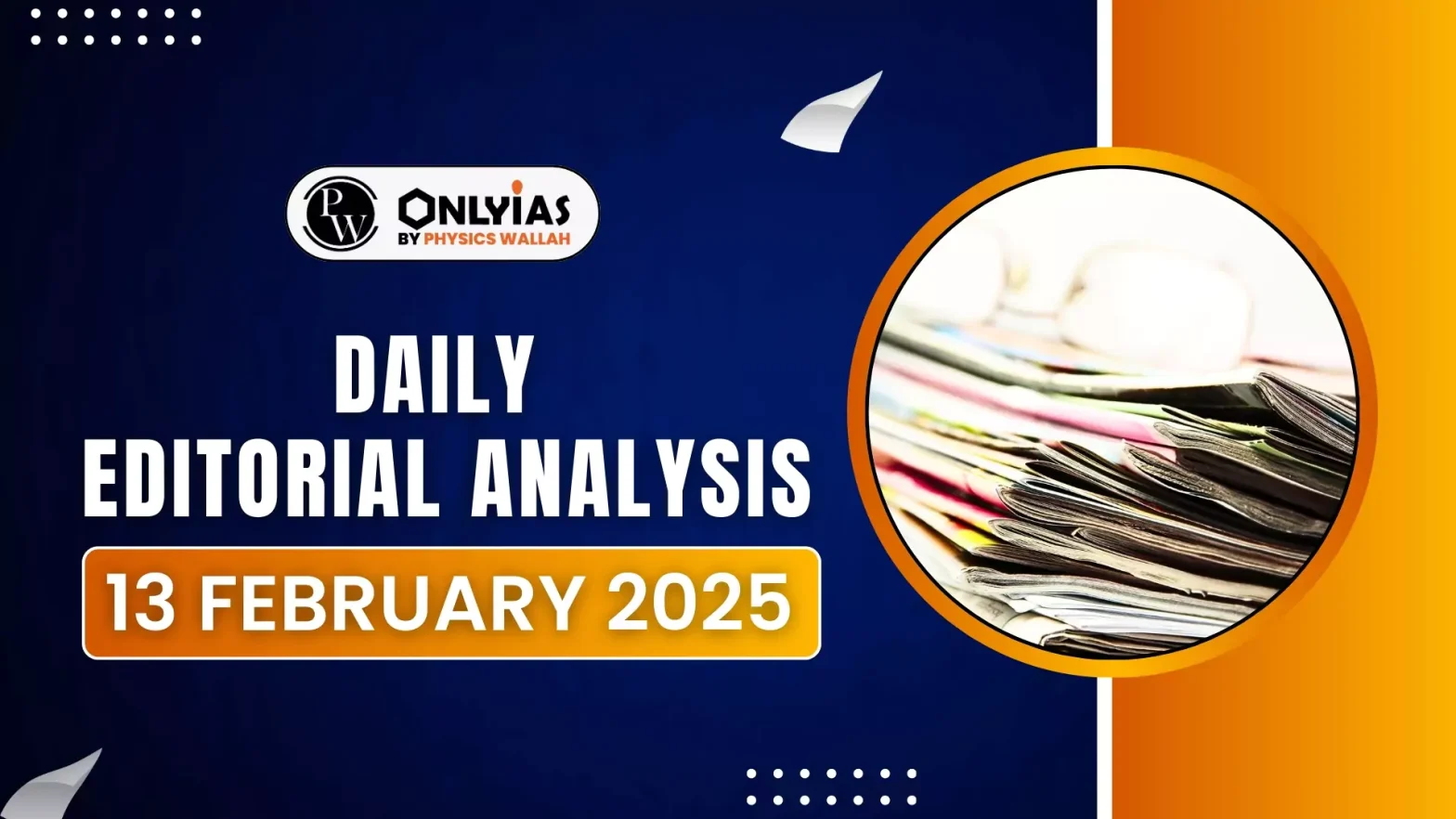Prime Minister Narendra Modi after attending the AI Summit in France is set to meet Donald Trump in Washington, DC.
India-US Relations Under Trump Administration
- Historical Background: India-US relations have been moving in an upward direction since Bill Clinton’s 2000 visit. This came after two years of frosty relations marked by U.S. sanctions following India’s nuclear tests (Pokhran II) in 1998.
- India’s Relations With Trump’s US: India is familiar with President Trump from his first term. However, the nuances of dealing with President Trump’s second term should not be underestimated, as Jaishankar points out that Trump’s Indian diplomacy is “out of syllabus.”
- Navigating Complex Relations: Prime Minister Modi and External Affairs Minister S. Jaishankar has navigated complex diplomatic waters for over a decade.
- Trump’s Unconventional Approach: Trump’s domestic and foreign policies represent a break from the approaches of his predecessors and the broader post-war American consensus.
- Moving Away from the Ideology of “Globalism”: His “America First” ideology is evident in his determination to downsize the state, reduce immigration, discard regulations on the tech sector, revive manufacturing, and challenge the liberal values (or “woke values”) he perceives as burdens on the American public.
Diplomatic Challenges
- Transactional Approach: Trump’s transactional approach to diplomacy, characterized by aggressive negotiation and an emphasis on deal-making, presents both an opportunity and a challenge for India.
- Similarity with India: Modi, like Trump, is pragmatic and transactional, a shift from India’s previous ideological approach to foreign policy. For instance, India has foregone the Non-Aligned Movement (NAM) and has completely ignored it.
Five Key Areas of Focus
- Prime Minister Modi has outlined five key areas for engagement during his visit: trade, defense, energy, technology, and supply chain resilience.
- Trade: Trade is one of the most pressing issues between India and the US. Trump has not missed the opportunity to praise Modi’s leadership while pointing out India’s high import tariffs.
- India’s Response: In response, India has shown willingness to reduce tariffs and provide greater market access for US goods.
- Future Challenge: However, with Trump’s demands for trade partners growing more stringent in his second term, negotiations in this area will be critical.
| India-US Trade Relations
U.S. goods imports from India totaled $87.4 billion in 2024, up 4.4 percent ($3.7 billion) from 2023. U.S. exports to India account for 2.02 percent of overall U.S. exports in 2024.
The U.S. goods trade deficit with India was $45.6 billion in 2024, a 5.3 percent increase ($2.3 billion) over 2023. In other words, the USA imports more than it exports. |
- Energy Cooperation: India’s dependence on hydrocarbon imports and the US’s status as a major energy producer presents an opportunity for greater cooperation in the energy sector.
- Scope for Collaboration: Additionally, Trump’s focus on expanding nuclear power to support America’s AI industry aligns with India’s own intentions to develop its nuclear power capabilities.
| The Civil Liability for Nuclear Damage Act, 2010 (CLNDA, 2010) made plant operators liable for accidents but allowed possible course of action against suppliers, discouraging both domestic and foreign investment.
Companies like GE and Westinghouse hesitated to enter India’s nuclear market due to liability risks under the CLNDA. |
- Defense Cooperation: Defense cooperation has become a cornerstone of the India-US relationship.
- Different Expectations: Trump seeks to expand India’s purchase of US defense equipment, while India is eager for more favorable terms in technology transfer and co-production.
- Countering China: Both countries are also focused on addressing the increasing threat posed by China’s weapons production. A renewed emphasis on operational cooperation and a more ambitious defense framework could be key outcomes of this summit.
- Technological Cooperation: Technological cooperation remains a high priority for both India and the US.
- US-China Tech Rivalry and iCET: While the Biden administration made progress on initiatives like the critical and emerging technology (iCET) framework, more needs to be done to address challenges posed by China’s advancements in AI and other advanced sectors.
- What India Needs to Do?: India will need to balance expanding its collaboration with the US while mitigating the potential for restrictive controls on technology diffusion.
- Supply Chain Resilience: The idea of enhancing supply chain resilience gained momentum during the first Trump administration, particularly in response to the COVID-19 pandemic, which highlighted the world’s overreliance on China.
- Picking Up Discussion Again: With China’s manufacturing exports still on the rise, the PM’s discussions with Trump and American corporate leaders could focus on solutions to mitigate this global dependency.
Domestic Reforms
- An underlying opportunity for Modi and his delegation lies in observing Trump’s efforts to dismantle the bureaucratic state in America.
- This initiative to downsize the managerial class and reassert control by elected leaders mirrors Modi’s own 2014 slogan of “minimum government, maximum governance.”
- For India, responding to Trump’s approach requires not only adept diplomacy but also a commitment to comprehensive reforms at home.
Conclusion
The Modi-Trump summit marks a crucial juncture in the evolving relationship between India and the United States. Strengthening ties in areas like trade, defense, technology, and energy, while addressing global challenges such as supply chain resilience and China’s rise, will be key to advancing mutual interests. Ultimately, the success of this summit will depend on India’s ability to adapt to the changing global order while maintaining its own national priorities.
![]() 13 Feb 2025
13 Feb 2025

